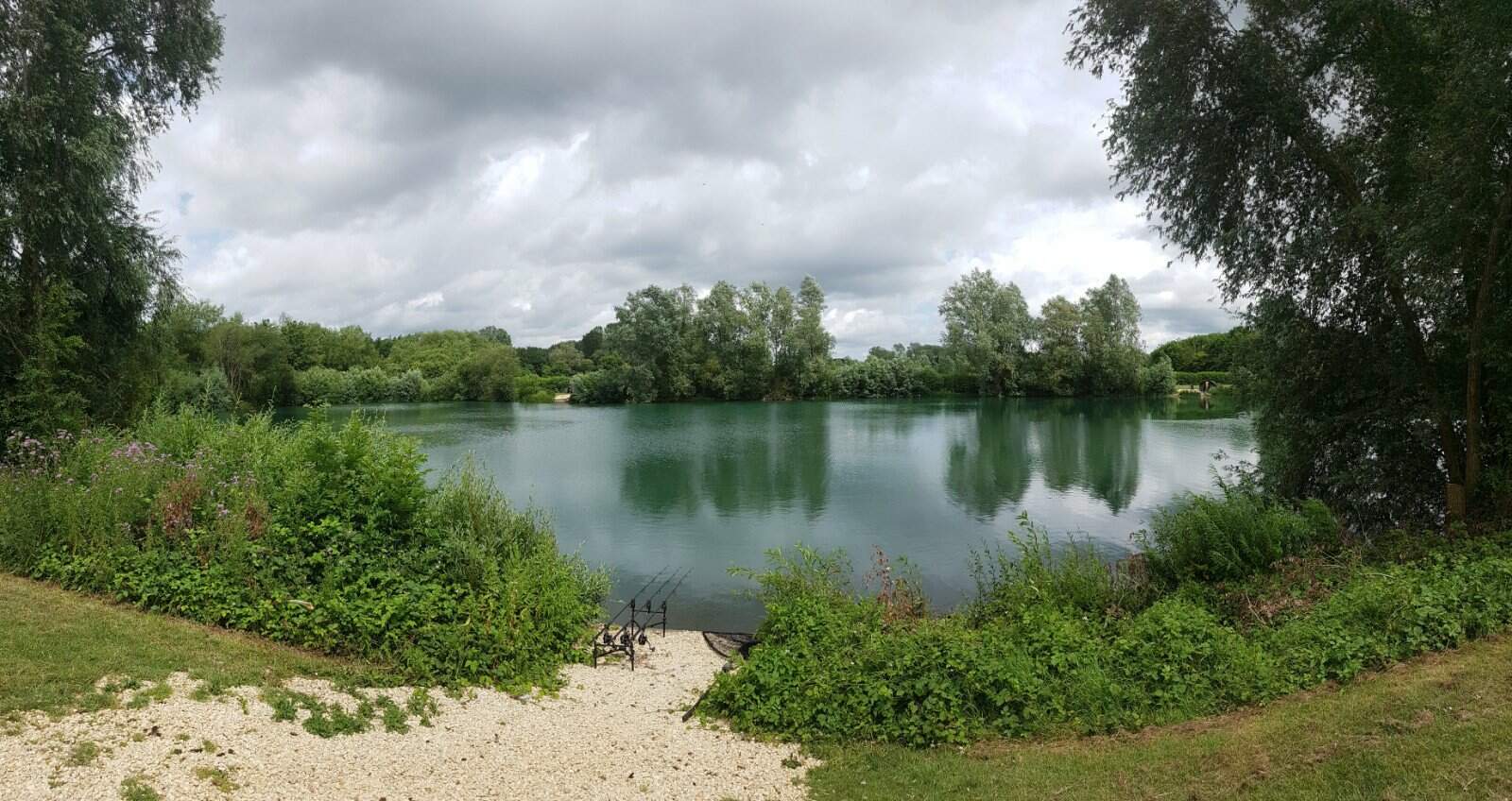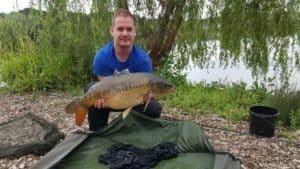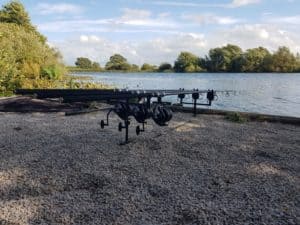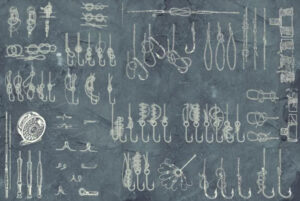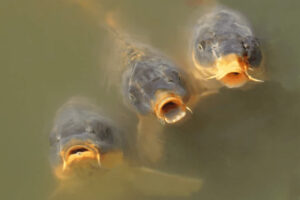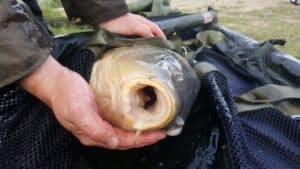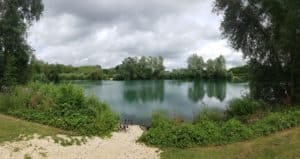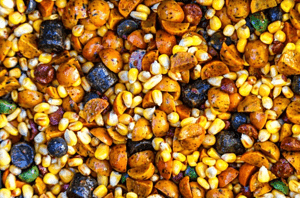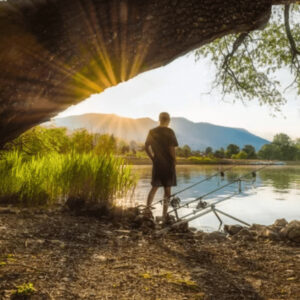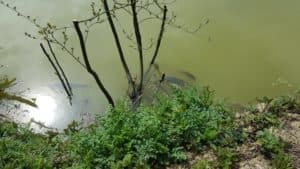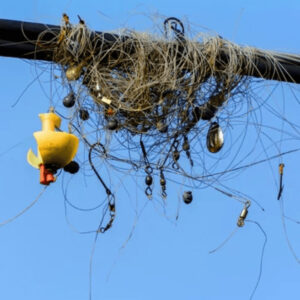Carp love warm weather and will actively feed when the water temperatures are between 60-65 degrees
What are the best weather conditions for carp fishing? The best weather is a day with a warm gentle wind, but slightly overcast and no direct sunlight.
Carp are a popular game fish, known for their large size and trophy potential.
Carp are found in freshwater lakes and rivers all over the world, and anglers often target them during the spring and summer months when they are most active.
One reason why carp are so active during warm weather is that they love water temperatures between 60-65 degrees.
This temperature range is ideal for feeding, and carp will often be put on a real feeding frenzy during these months.
As a result, anglers who want to catch carp should focus their efforts on days when the water is warmest.
By understanding the needs of carp, anglers can have even more success in landing these big fish.
They will also feed more heavily leading up to a cold front
Carp is a hearty fish that can withstand cold weather quite well.
In fact, they will often feed more heavily leading up to a cold front.
This is because carp are looking to pack on as much weight as possible to help them survive the cold months ahead.
As a result, carp fishing can be quite good in the fall and winter months.
Anglers just need to be prepared for colder temperatures and potential ice on the water.
Understanding water levels and how they affect carp feeding habits
Carp are quite sensitive to changing water levels.
When the water is lower, carp will often congregate in deeper pools where food is more abundant.
On the other hand, when the water is higher, carp tend to spread out into shallower areas where they can feed on a greater variety of food sources.
As a result, anglers should pay attention to water levels when targeting carp and adjust their tactics accordingly.
The effect of wind on carp fishing
Wind can have a dramatic effect on carp fishing.
When the wind is calm, carp will often feed closer to shore where they are better protected from predators.
On the other hand, when the wind is strong, carp will seek shelter in deeper water where they are less likely to be disturbed.
Anglers should take note of the wind direction and strength before targeting carp so that they can adjust their tactics accordingly.
By understanding the weather patterns and other environmental factors that affect carp fishing, anglers can maximize their success when targeting these popular game fish.
From water temperature to wind direction, there are many variables that can influence carp feeding habits.
By taking all of these factors into consideration, anglers can have even more success in catching carp.
Pay attention to the barometer – if it’s rising, that means good weather is on the way and carp will be biting
As an avid fisherman knows, the barometer can be a helpful tool for predicting weather patterns.
A rising barometer indicates that the air pressure is increasing, which typically means that good weather is on the way. In particular, carp tend to bite more when the barometer is rising.
For this reason, it’s always a good idea to keep an eye on the barometer before heading out to your favourite fishing spot.
By paying attention to the barometer, you can increase your chances of getting a bite.
After a cold front passes, give the fish some time to adjust before heading back out
Carp are hardy fish, but they can still be affected by changes in water temperature.
After a cold front passes, give the fish some time to adjust before heading back out.
The carp may have moved to different depths in search of warmer water, so it may take some time to find them again.
In addition, carp are less active in cold water, so they may not be as interested in bait.
Patience is key when fishing after a cold front, but the effort is often rewarded with big catches.
By understanding the needs and behaviors of carp, anglers can have even more success in landing these big game fish.
By paying attention to water temperature, wind direction, barometer readings, and other environmental factors, anglers can better predict when carp are likely to be feeding.
With the right knowledge and a bit of patience, anyone can become an expert carp angler.
Look for areas where there is consistent sunlight – this is where you’ll find the most active fish
Carp loves areas with lots of sunlight, so that’s where you’ll find the most active fish.
Look for sunny spots near the shoreline, and you’re sure to have success. In addition to being more active in these areas, carp are also attracted to warmer water temperatures.
So if you’re carp fishing, remember to keep an eye out for sunny spots!
Know the Best Times of Day to Catch Carp
In addition to understanding the environmental factors that can affect carp fishing, anglers should also pay attention to the best times of day for targeting carp.
Generally speaking, morning and evening are often considered the best times for carp fishing since this is when they tend to feed most actively.
Additionally, cloudy days may be more productive than sunny ones since carp prefer more dimly lit environments.
Anglers should also take into account the season and type of bait they are using when determining when to fish for carp.
Finally, it’s important to remember that carp fishing requires patience and practice.
With time and dedication, anglers can learn the best techniques and tactics for targeting carp.
By using the right knowledge and understanding of environmental factors, anyone can become an expert carp angler.
Conclusion
You now have a few tips on how to fish for carp in any weather. Pay attention to the temperature, barometer, and sunlight, and you’ll be sure to have a good day out on the water. Now get out there and give it a try!
FAQ
What is the best time of day to go carp fishing?
Generally speaking, morning and evening are often considered the best times for carp fishing since this is when they tend to feed most actively. Additionally, cloudy days may be more productive than sunny ones since carp prefer more dimly lit environments.
Is carp fishing affected by the barometer?
Yes, carp fishing can be affected by the barometer. Low-pressure systems with clear skies often indicate good conditions for carp fishing, while high-pressure systems usually mean that the fish won’t be as active. It’s always a good idea to keep an eye on the barometer before heading out to your favourite fishing spot.
How do I know where to find carp?
Look for areas where there is consistent sunlight – this is where you’ll find the most active fish. In addition to being more active in these areas, carp are also attracted to warmer water temperatures. So if you’re carp fishing, remember to keep an eye out for sunny spots!
What type of bait should I use for carp fishing?
Different anglers have different preferences when it comes to bait. However, some common baits used for carp fishing are corn, doughballs, and worms. It’s important to experiment with different types of bait to see what works best in your local area. Some fish may be more attracted to certain baits than others, so it’s worth doing some research before heading out on the water.
Are there any special techniques for carp fishing?
Yes, there are a few techniques that can be used to help increase your chances of success when carp fishing. It’s important to remember that carp fishing requires patience and practice. In addition to using the right bait, anglers should also pay attention to environmental factors such as temperature and sunlight when setting up their rigs. Additionally, certain tactics such as stalking or using a slow-sinking line may provide better results than others. By understanding these factors, anglers can have even more success in their next carp fishing adventure.
Related Posts
I have made a lot of mistakes during my fishing sessions and don’t want you to make the same mistakes. I’ve learned the hard way over 20 years of fishing most weekends, testing, tweaking, and testing again and now want to help you excel with your carp fishing.
If you need any help, you can reach me at Fishing Again’s Facebook page
Last Updated on February 2, 2024 by Shane

